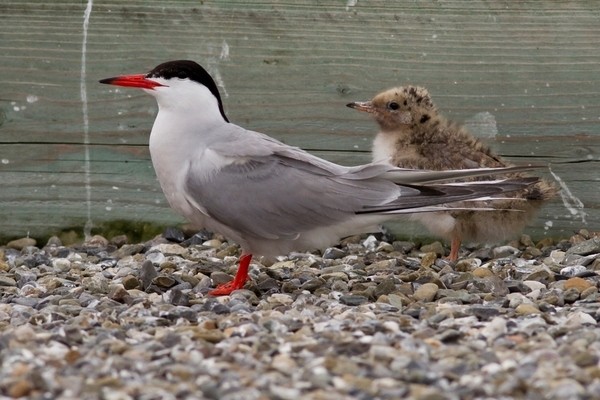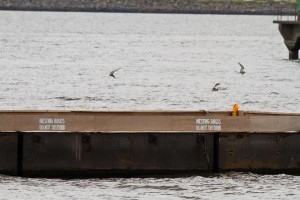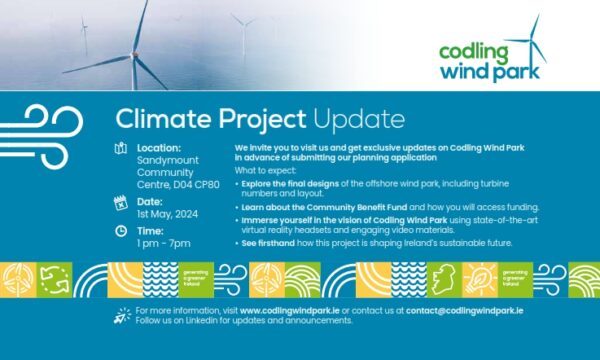
Common tern adult and chick.
Pic: John Fox
A plan has been put in place to conserve and protect the tern population of Dublin Port!
The Dublin Port Tern Colony Management Plan is the result of a collaborative effort by a number of stakeholders, including the ESB, BirdWatch Ireland and Dublin City Council.
Terns are listed in the EU Birds Directive, which aims to protect all wild bird species native to the European Union, with special emphasis on conserving the habitats of migratory birds such as the tern.
As such, one of the measures proposed in the plan is the construction of floating pontoons interspersed throughout Dublin Port, dedicated to allowing terns to nest. One of the two pontoons already constructed can be easily viewed near the Great South Wall, and has been named in honour of late ornithologist Oscar Merne. Already it is home to 24 pairs of nesting terns!

The Oscar Merne tern pontoon is already home to 24 pairs of nesting terns.
Pic: John Fox
The plan, which is in line with commitments made in the Dublin Port Company Masterplan 2012-2040, will allow for greater study of these protected birds, as the Head of Conservation and Science at BirdWatch Ireland, Olivia Crowe pointed out: “BirdWatch Ireland continues to monitor this highly important tern colony thanks to the support of Dublin Port Company. By doing this we are continuing the great work that was initiated by the late Oscar Merne, who started monitoring this colony during the 1990s. We look forward to tracking how the terns respond to the additional nesting space provided by these new pontoons.”
By Aimée Mac Leod



